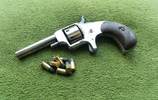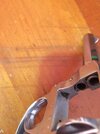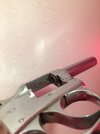RevolvingGarbage
Member
I managed to wrestle this off gunbroker for a price almost decent all things considered.
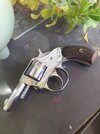
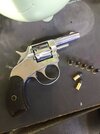
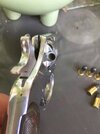
I already have a .32S&W Young America, and I was expecting this to be the same gun with a slightly higher amount of smaller diameter holes in the cylinder.
(.32S&W on top, .22 Long below)
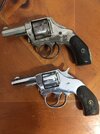
Not so!
The .22 version apparently has the same size grip but the upper part of the frame is considerably smaller, and the cylinder is even smaller and lighter than the already very tiny .32 version. They still managed to fit 7 rounds of .22 Long in this, though the rounds pictured are .22CB Shorts. I suspect the gun would eat standard pressure .22 short without being beat to death, but for the most part ill be using these to be on the safe side.
It was listed as non functional for lack of a mainspring. Im thinking it clearly was refinished at some point, though it appears to have been decently well done. It also needs a new flat spring to power the sear for single action, a refreshed cylinder pin retainer spring, and a little work on the cylinder friction detent to really bring it back to like new, but it does work at least. It’s always nice when repairs end up being only simple stuff.
I really think these guns deserve more of a cult following. I doubt we will ever see a time when the line between functional firearm and comically small curio gets so perfectly straddled as with these little double action revolvers from days gone by.
(1911 and S&W Perfected for size comparison)
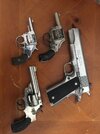



I already have a .32S&W Young America, and I was expecting this to be the same gun with a slightly higher amount of smaller diameter holes in the cylinder.
(.32S&W on top, .22 Long below)

Not so!
The .22 version apparently has the same size grip but the upper part of the frame is considerably smaller, and the cylinder is even smaller and lighter than the already very tiny .32 version. They still managed to fit 7 rounds of .22 Long in this, though the rounds pictured are .22CB Shorts. I suspect the gun would eat standard pressure .22 short without being beat to death, but for the most part ill be using these to be on the safe side.
It was listed as non functional for lack of a mainspring. Im thinking it clearly was refinished at some point, though it appears to have been decently well done. It also needs a new flat spring to power the sear for single action, a refreshed cylinder pin retainer spring, and a little work on the cylinder friction detent to really bring it back to like new, but it does work at least. It’s always nice when repairs end up being only simple stuff.
I really think these guns deserve more of a cult following. I doubt we will ever see a time when the line between functional firearm and comically small curio gets so perfectly straddled as with these little double action revolvers from days gone by.
(1911 and S&W Perfected for size comparison)



